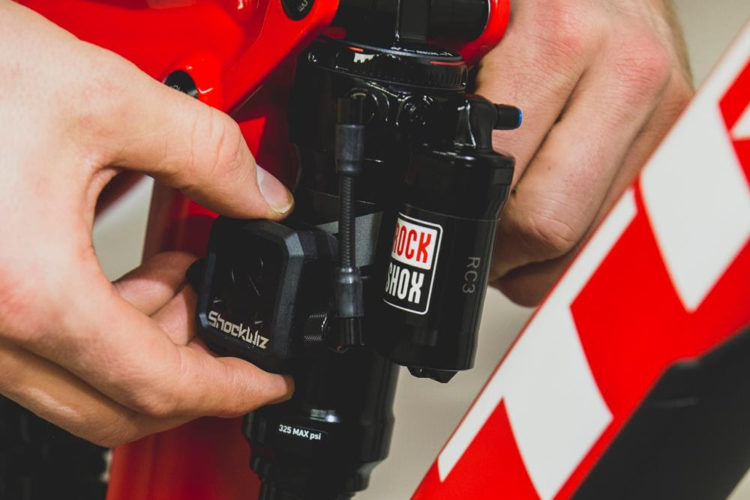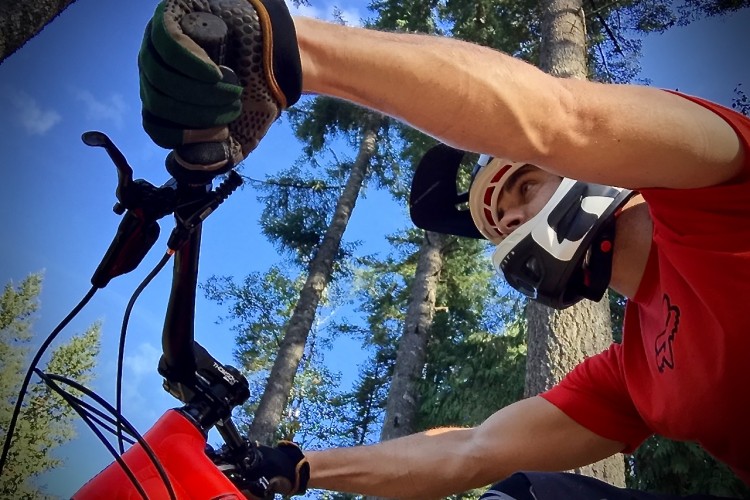
If you love the sensation of gravity tugging you down as fast as possible then you already understand that braking less increases your speed. On mountain bikes, brakes are our throttle, and with a mix of courage, technique, and proper setup, we can squeeze them less to shave seconds from our descent times.
Brake Ace founder Dr. Matt Miller studied the effects of braking and how to better manage it as part of his Ph.D. work in New Zealand. Miller grew up in Pennsylvania, working on and riding bikes from a young age. He started racing in 2001, and would eventually co-manage the Giant Mid-Atlantic Off-Road team where he had dreams of racing professional XC and enduro. After earning a master’s degree in Exercise Science he began coaching other mountain bike athletes, and in 2014 he moved to New Zealand to conduct research for a Ph.D. focused on the scientific side of mountain bike descending. In his words, Miller “came to New Zealand to study mountain biking” which is fitting with his YouTube channel and blog titled MTB Ph.D.
Miller’s initial research focus was on modeling the perfect race, based on fitness and bike factors combined. After studying several aspects of vibration analysis and other intrinsic variables of descending Miller zeroed in on how riders slow down as the focal point for his doctoral research. He had been using power meters with the athletes he coaches for some time, and wanted to employ the same technology to look at how hard they are braking and where, and how changing some of that behavior might help folks ride downhill faster.
The result of this hard work, repeating trails and helping professional riders become faster through braking analysis, is a product Miller named Brake Ace. The system is relatively simple, with a set of power meters taking the place of caliper adaptors that read the individual force and related heat that the front and rear brakes generate while riding. That information is downloaded into some powerful software that allows the rider or skills coach to assess braking patterns and potential improvements. The app uses a “Flow Score” that calculates braking duration, intensity, and modulation to provide a clear picture of how a rider is squeezing their brake levers.
Brake Ace is currently running a Kickstarter campaign to help fund the second phase of its product development, which is a fully wireless set of sensors. Miller says that the wired sensors are super simple, using the same power reading technology that athletes employ to read the watts their legs can produce. He began testing this new wireless system in 2017 to clean things up a bit, and anyone who contributes $10 to the Kickstarter fund will receive a 60% discount on a set of sensors once they are ready. At full retail, the system costs $1,599, and that discount will make a huge difference for folks who want to improve their gravity performance. Miller says that the sensors are made by hand, and he won’t be making a dime on these first sets. He simply wants to get as many people as possible using them to get the word out.
In our interview, Miller mentioned that he has been really surprised by how the professional riders he works with use their brakes, compared to how people talk about braking. For example, most riders are using their rear brake most of the time, even if they feel that they use both brakes equally. This finding doubly justifies the use of larger rear rotors, like the 203mm plates we often see in DH and enduro racing. He also said that the well-known MTB skills maxim of “do all of your braking before the turn” simply isn’t accurate. People aren’t doing that. The fastest riders Miller works with are braking as late and intensely as possible, often right up to the apex of the turn. He cited one particular analysis with World Cup racer Bryn Dickerson, saying that he used the brakes the most at the apex of the turn, letting off the levers almost immediately after for a fast exit. No matter who he’s working with, Miller says that braking as late as possible, with more intensity, over a shorter period of time, will always lead to a faster overall descent. The stopwatch doesn’t lie.

With only one testing day Miller says that Dickerson showed up and did a baseline descent on an unknown track with a borrowed bike, and Miller was able to keep up. Then they looked at the Brake Ace analysis to see where Dickerson could brake less to carry speed, and Miller was no longer able to stay with the pro rider. What did Dickerson change? He looked at the Brake Ace app to see the three main segments where he could improve and focused on waiting longer to brake harder for a shorter amount of time through those bits of the track. Voila. The following runs were far faster. Miller was a bit chuffed, since these are local trails that he knows well, and Dickerson was borrowing his bike.
Miller wanted to note that Brake Ace isn’t just for racers. Anyone can enjoy going faster once they have a better understanding of where and how they are using their brakes. He mentioned that professional skills coach Harlan Price came out to New Zealand to test the sensors and he was super impressed with how the product can help him show athletes the benefits of certain braking skills. Additionally, riders can see the difference between two bikes, how suspension tune affects their traction related to braking, how they can brake differently after swapping tires, and a host of other variable analysis.
Given the one-run rule in most modern enduro races, riders are left with their action-camera footage to see where they can go faster on a given track before race day, and the readout that the Brake Ace software provides will show where they might want to smooth out a line or brake later to raise their overall speed on a segment. In the video below, Miller goes over the analysis with a friend to show how the system can help folks increase their speed.
One fun test Miller conducted was to try brake Ace with clipless vs. flat pedals to determine which is faster for him. While he had always ridden clipless pedals, he said that flats felt amazing in corners and he really wanted to know if there was a meaningful advantage to either platform. Despite his level of familiarity, the flat pedals were the clear winner by a significant margin.
No matter what sort of singletracks you ride, you can undoubtedly ride them faster with this cool braking analysis system from Brake Ace. If speed is your primary goal, you may want to get in on their current Kickstarter offer.






















1 Comments
Jun 8, 2021